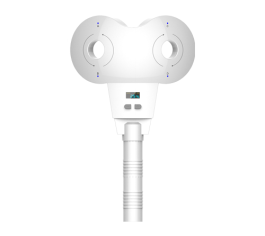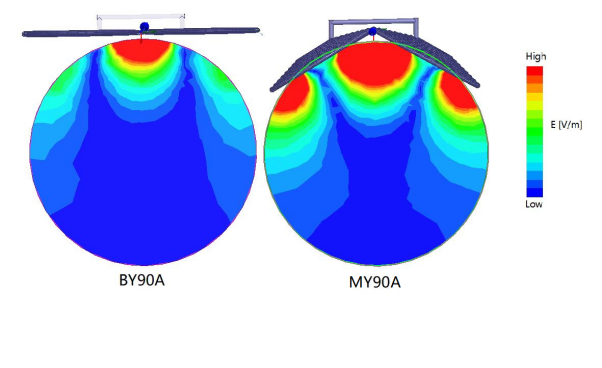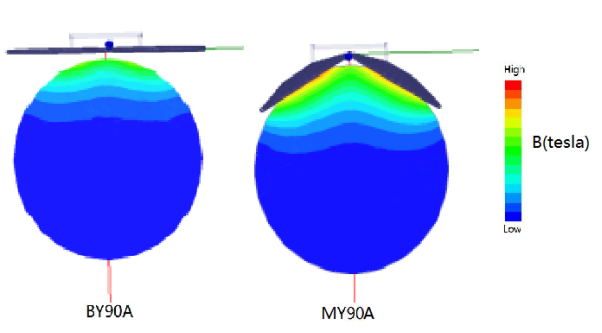Release time :2022-09-16
Source:support@yingchitech.com
Scan:1747
Depression is predicted to overtake cardiovascular disease in the future as the leading cause of disability worldwide, affecting 15% of the population.rTMS has worked well for depression, and in recent years, researchers have developed a double-cone coil that works better with rTMS for mental illness.
The double-cone coil is an upgraded version of the butterfly coil, which has deeper penetration but less focus than the traditional butterfly coil. It can reach the butterfly coil-inaccessible target area, such as the leg motor area or the medial prefrontal cortex, and may effectively reach the cingulate gyrus, insula, and cerebellum. In the reviewed studies, no serious adverse events were reported. At present, some double-cone coils have been certified by the US FDA and the EU CE, and can be used in diseases such as obsessive-compulsive disorder (OCD).
We know that rTMS therapy is performed based on TMS coil contact with the human brain. At the core of the coiled coil forms a magnetic field and an electromagnetic field that needs to be greater than a Tesla. When the brain and magnetic fields are close to each other, these magnetic fields can quickly form and cancel each other, penetrating the brain in a short time to produce a tiny current that stimulates the cells in the brain, motivating these cells to perform their typical functions. Different TMS coils reach different brain depths, and we mainly compare the butterfly coil with the double-cone coil.
The butterfly coil can be seen as consisting of two circular coils connected side by side in the same plane, and the double-conical coil consists of two circular coils with an angle of 120°.


The butterfly coil is most commonly used to generate current 2cm below, enough to depolarized the shallow cerebral cortex (such as M1 face and hand representative area, posterior central gyrus, prefrontal cortex), visual cortex, temporal cortex, and is more focused than other TMS coils.
Clinically, it is shown that the double-cone coil can better fit the skull contour, and can fix the head to some extent, reducing the clinical off-target phenomenon due to the patient's head movement. The double-cone coil can generate a current at 4-5 cm below the intersection of the two coils, so the stimulation site is deep (e. g., brainstem, insula cortex), which is often used in the acquisition of lower limb movement-evoked potentials.
Through the following two simulation maps, we can see that the butterfly coil is valid at the electric field and the magnetic field strength at 2cm below the cerebral cortex, while the second two-cone coil remains valid at 4-6 cm below the intersection of the two coils.(BY90A is one kind of YINGCHI butterfly coils and MY90A is one kind of YINGCHI double cone coils)

Electric field distribution simulation diagram of BY90A and MY90A


Magnetic field distribution simulation diagram of BY90A and MY90A
TMS coils are available in a dizzying array of sizes, configurations, and materials. Before the figure 8 coil design was invented, a coil's standard shape was either a sphere or a circle. The figure 8 coil is one of the most well-known coils you can utilize for single or paired-pulse applications. In addition, transcranial magnetic stimulation (TMS) devices like YINGCHI TMS use a modified version of the figure 8 coil design. They have an integrated vacuum for cooling the device during extended sessions of repeated TMS. Only two to three centimeters deep into the brain are accessible to focused pulses emitted by these coils. However, the vibrations produced by other coils, such as the Double-Cone Coil or our custom-built Angled Airfilm Coil, can reach deeper regions of the brain, although they may not be as targeted as those produced by the figure 8 coil coil. Following are some of the different types of coil.
The deep stimulation provided by the Passive Double Cone Coil causes the muscles of the pelvic floor and lower limbs, which has been relaxed, to contract. It is pretty simple to zero in on the MT thanks to the variable-intensity controls and the trigger that is positioned on the side.
YINGCHI TMS has utilized the double cone coil, which is capable of accessing deeper cortical tissue, in order to excite the pelvic floor, the lower limb motor representation, and the anterior cingulate cortex (ACC). All three of these areas were stimulated by the double cone coil (anterior cingulate cortex). It is helpful in the treatment of the major depressive disorder, obsessive-compulsive disorder, stroke, and other conditions, and it has the capacity to stimulate reactions in the lower extremities.
Double-cone coils can almost further stimulate the whole brain, such as the cerebellum, anterior cingulate rus, insula, orbitofrontal lobe, etc. Researchers around the world have studied the use of double-cone coils for the treatment of different diseases:
Because the lower limb movement area is located in the inner side of the cortex (longitudinal crack brain side wall), ordinary 8 word coil is difficult to stimulate the part, many literature by comparing double cone coil and 8 word coil, confirmed that the use of double cone coil can effectively stimulate the lower limb motor cortex, and for such as Parkinson's, stroke and other diseases caused by motor dysfunction to improve [1-2].
Depression is the most commonly used indication for rTMS. High-frequency stimulation of the left dorsolateral prefrontal lobe (DLPFC) using an 8-word coil has been FDA approved and the guideline category A is recommended. However, some literature reviews have shown that using double-cone coil for bilateral dorsomedial prefrontal (DMPFC) stimulation can also effectively treat depression [3], and controlled trials have suggested that using double-cone coil stimulation for the dorsal anterior cingulate rus (dACC) is more effective in reducing the depression score [4].
Back in 2018, the FDA had approved the H7 coil for the treatment of OCD. In 2020, the FDA approved the double-cone coil for the treatment of OCD, and there are several literature indicating that the use of the double-cone coil for stimulation to the orbitofrontal cortex, DMPFC, and ACC can be effective in treating OCD [5-6].
In addition to these three diseases, the researchers have tried to use a double-cone coil for schizophrenia, addiction, neuropathic pain, tinnitus, ataxia and other diseases.
Using a TMS device with a double-cone coil is not only safe, but also improves the treatment success rate. In this guide, we elaborate on what you need to know about double-cone coils. To get the TMS devices, you can also visit the www.yingchitech.com/en!
[1] Kim MS, Chang WH, Cho JW, et al.(2015).Efficacy of cumulative high-frequency rtms on freezing of gait in parkinson’s disease.Restorative Neurology and Neuroscience.
[2] Sasaki N, Abo M, Hara T, et al.(2017).High-frequency rtms on leg motor area in the early phase of stroke.Acta Neurologica Belgica, 117(1), 1-6.
[3] Monteiro, D.C., & Cantilino, A..(2018).Use of a double〤one coil in transcranial magnetic stimulation for depression treatment.Neuromodulation.
[4] Kreuzer, P.M., Schecklmann, M., Lehner, A., Wetter, T.C., & Langguth, B..(2014).The acdc pilot trial: targeting the anterior cingulate by double cone coil rtms for the treatment of depression.Brain Stimulation, 8(2), 240-246.
[5] Hardwick, R.M., Lesage, E., & Miall, R.C..(2014).Cerebellar transcranial magnetic stimulation: the role of coil geometry and tissue depth.Brain Stimulation, 7( 5), 643-649.
[6] Bakker N, Shahab S, Giacobbe P, et al.(2015).rTMS of the dorsomedial prefrontal cortex for major depression: safety, tolerability, effectiveness, and outcome predictors for 10 hz versus intermittent theta-burst stimulation.Brain Stimulation, 8( 2), 208-215.